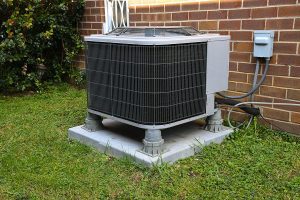
Is the thought of choosing the right AC unit to cool your Albuquerque home or office making you sweat? This simple guide breaks down the key factors to think through before making this big purchase.
Keep reading!
Look at Your Budget
Before anything else, figure out how much moolah you can drop on a new AC. Cheaper units with basic features usually go for $300 to $500. I’m talking’ simple stuff like temperature controls, adjustable thermostat, a couple fan speeds. Maybe a timer if you’re lucky!
Fancier units get pricier quick:
- Wall units run $400 to $700. Little more flexible on where you install ‘ them
- Portable ACs offer max mobility but max cost too. We’re talking’ $700+ here.
- Ductless mini split systems are most expensive upfront, around $900 for one zone, into the thousands for multi-zone. But save energy in the long run.
DIY or Call in a Pro?
Next question – you want to install this thing yourself or pay someone else to do it?
Portable ACs are by far easiest to DIY. Just got to attach the exhaust hose and window kit. Most come with the bits you need.
But stuff like window units, wall units, and mini splits take way more time and care. You ready for that?
- Window units mean mounting’ brackets, curtains, foam seals…lots of little parts.
- Wall units you got to cut a hole in the wall just right. Precise measurements matter!
- Ductless mini splits need professional install usually. You got to run refrigerant lines from the outdoor compressor to the indoor unit(s).
- PTACs involve some wiring and ductwork. DIY possible but tricky.
So if you want to skip the headache, call an HVAC pro for anything but a portable unit.
Check Your Electrical Situation
Here’s another key factor – what kind of outlets you working’ with?
Most standard portable units can plug into normal 110-120 volt household outlets. More powerful models may need 220-240 volts though.
Other types like window units, wall units, PTACs have specific volt needs, usually 220-240. Call an electrician if your wiring can’t handle it!
Energy Efficiency – Look for High EER Ratings
AC units vary a ton in efficiency these days. In general, portable units are less efficient than permanent types. All that hot air leaking out the exhaust hose is bad news.
When comparison shopping, peep the Energy Efficiency Ratio or EER rating. Higher numbers mean more efficient. Or look for the Energy Star label – it means that model meets strict energy standards.
Out of permanent types, ductless mini splits are usually most energy efficient. The compressor and condenser are outside, so zero ductwork losing cool air inside.
Handling Condensation Drip
Heads up – ACs produce water condensation when they run. Different types deal with it differently:
- Window units and wall units have a base that slopes or a drain hose to divert water outside.
- Ductless mini splits are really efficient – the outdoor unit handles moisture so indoor unit rarely drips.
- Portable ACs collect water in a tank you got to empty, or you can attach a drain hose.
The Portability Factor
Portable ACs win for mobility thanks to their little wheelies that let you roll them room to room. Downside is they’re less powerful and efficient than installed options.
Ductless mini splits, PTACs and vertical units get mounted or hardwired semi-permanently. Great cooling power but zero portability.
So depends if you want to move it or need max power in one spot!
Plan Based on Your Floor Plan
Look at your floor plan to decide the best system. Ask yourself:
- How many rooms need cooling? Zoned systems like mini splits are great for multiple rooms. Portables can move but only run in one room at a time.
- Got windows nearby? Window units obviously need a window access. Wall units need exterior wall access.
- Existing ductwork? Central AC and PTACs can use ducts if you got ’em. Ductless don’t need any.
- Outdoor space for a compressor? Ductless, windows units, PTACs have an external compressor that needs airflow.
- What’s your ceiling height? PTACs mount high on wall or ceiling. Portables chill on the floor.
Get Pro Help with BTU Calcs
Very important – get the right BTU capacity matched to your space. Too small won’t keep you cool. Too big is wasteful.
Have an HVAC pro calculate BTUs needed based on room size, climate, windows etc. As a very rough guide:
- 100 to 300 sq ft = around 5,000 BTUs
- 300 to 600 sq ft = 6,000 to 8,000 BTUs
- Bigger spaces = 8,000+ BTUs
But BTU needs vary a ton. Do not size your unit without pro input!
Consider Special Features You Want
Think about any fancy bonus features that fit your lifestyle:
- Programmable thermostat to set cooling schedules
- Dehumidifier mode if your climate’s muggy
- Multiple fan speeds
- Auto-swing louvers to spread air around
- Quiet sleep mode for nighttime use
- Smart app control for remote management
- Washable filters if you got allergies/pets
Compare the Pros and Cons
Once you’ve narrowed down your choices, make a pros and cons list for each model you’re eyeballin’. Compare to your home layout, budget, lifestyle, priorities.
Picking the perfect cooling solution takes some research and planning. When you need help on how to pick the best air conditioner for your Albuquerque home, call the Albuquerque air conditioner pros at Day & Night Plumbing at 505-974-5797.

